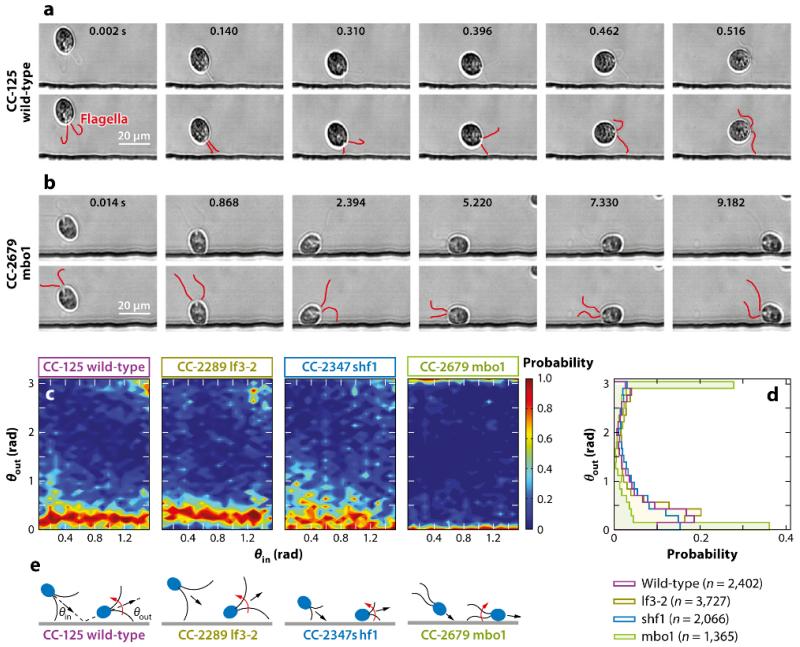FIG. 5.
(a) Scattering process for wild-type Chlamydomonas CC-125: (top row) original images and (bottom row) flagella highlighted in red. Results for the long-flagella mutant lf3-2 and the short-flagella mutant shf1 appear qualitatively similar. The scale bar is 20 μm. (b) As in panel a but for the mutant pusher mbo1 (which moves backward only), which remains trapped for several seconds. (c) The conditional probability distributions P(θout|θin) indicating that, for all four strains, the memory of the incident angle is lost during the inelastic collision process owing to multiple flagellar contacts with the surface. (d) The cumulative scattering distribution P(θout) showing how cilia length and swimming mechanisms determine the effective surface-scattering law. (e) Schematic illustration of the flagella-induced scattering and trapping mechanisms. Figure adapted with permission from Kantsler et al. (2013).

